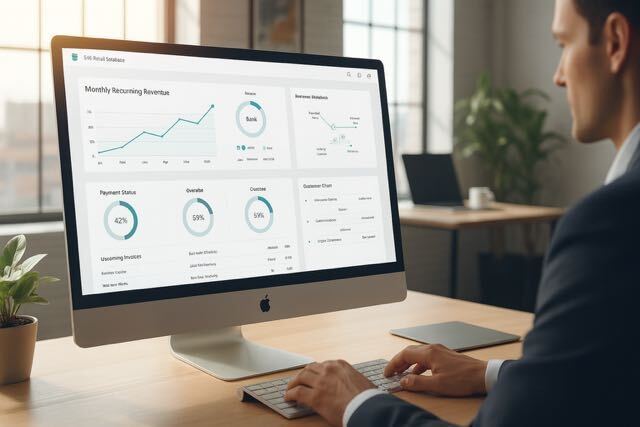The Types of Proposal Template Strategies, And How To Choose The Best One

Let’s answer one of the most brutal questions first: how many years have you been using PowerPoint to create sales quotes and documents?
5 years,?
10 years?
Long time, right?
The concept of business proposal software might seem too much of a task for a salesperson, but trust us, it’s much easier to use and saves a lot more time when compared to PowerPoint, word or docs. Proposal software is faster, better and easier to use for building proposals.. We strongly believe in this, otherwise we wouldn’t have built Zomentum in the first place!
Meanwhile, we also recommend you to read our most viewed blog Presentation vs. Proposal Software: Which Is Better For Your Sales Proposals? to give you a better understanding of why you must move over PowerPoint now!
Moving on, let us assume that you are convinced and ready to switch over from PowerPoint and adapt a proposal software like Zomentum. Let us assume you start using this proposal software, chances are the first thing you would do is open the proposal builder module and try out some inbuilt proposal templates. Isn’t it?
But do you know that the story behind using proposal templates also involves a strategy?
In this article we would talk about : proposal templates, the different types, and strategies behind them.
What are you losing without a full-proof proposal template strategy?
Functionality, efficiency, and consistency to your sales workflow.
Yes, a template strategy will help you get faster closures, streamline sales workflows, and keep your sales pumping with customized proposals faster than ever.
I’m outlining three commonly used proposal template strategies, how to use them, and key factors that influence the success of each one. Before we dive in, let’s take a step back and get everyone on the same page.
What is a business proposal template?
A business proposal template is the compilation of all the factors that remain the same for most of the proposals. When you categorize the sections and save them as a draft, to be used as an outline for most of your business proposals.
This means when you are ready to roll over a proposal, more than half of your task is taken care of by the templates.
Why should you use a business proposal template?
To close deals faster. Here’s how,
- Save yourself some time in creating proposals from scratch every time.
- Templates keep your sales document consistent, thus making it easier for you to know what’s happening with the client.
- If you use a single template, then you can make universal edits and inform your peers about the up-to-date version.
- Avoid errors within customer proposals.
What is a business proposal template strategy?
Your business proposal template strategy should involve ideas about how you want your proposal to be, to whom should you serve, how many customizations are required before sending it to your clients, and we list the rest right below,
- Your sales workflow and sales cycle.
- Volume of proposals you send daily, weekly, or monthly.
- Your industry type or the products/services you sell.
- Source of creating your business proposals.
- Source of editing the business proposals.
- Details about how many times you wish to update the templates.
These are not only the factors, in fact, there can be more as per your business.
Your template strategy will always define how you use your business proposals, how you store the proposal content in the content library, and how you change them as per needs. The outline of your template strategy must be error-proof, so you or your team can use the templates without hassle.
Okay, now that we are all on the same page, let’s quickly dive into the strategies and how to choose the best one for your team.
The Frankenstein
This includes a master template with all the sections. While drafting a fresh proposal, the details which you enter are highlighted (with merge tags in Zomentum) within the proposal software. You and your team edits the master proposal only when required. In most of the cases, details about your prospects can be filled by taking the elements from this master to create a new proposal.
In Zomentum for example, Merge tags are used to do this. Merge tags are predefined tags that are inserted between the proposal content to fetch only the data which keeps changing. Everything else in your proposal template’s body remains the same.
Frankenstein is good for sales teams that:
- Want to simplify their proposal creation process.
- Want to control the information put into proposals.
- Want to have a master template so that all changes are updated universally.

Content management considerations
This template strategy relies on a thoughtfully constructed content library. You organize the content of your proposal section in such a way that you or your team does not have to make edits continuously.
With this template strategy, you can streamline the entire proposal drafting process.Confusions over which template to choose or what kind of edits to make are circumvented, and the content is filled in using the merge tags that hold proper information about the prospect.
Template per offering
A proposal template can be created for each of your offerings or services. You and your team can easily pick the proposal template best suited to your prospects.
This business proposal template strategy allows sales teams to:
- Sell more than one product or service.
- Create detailed proposals.
- Build and use packages or bundle driven templates specifically built for a type of service/product bundle

Content management considerations
This template strategy works best when the naming and filing of the proposal templates are done effectively. Since there are multiple templates, you have to go one step deeper in naming the templates. Your filename must contain the name or the type of template first, then labels to identify the section and specific content.
For example,
ProductA_Company_CaseStudy
Or
ProductA_Company_CaseStudy_Quote
Zomentum provides you the flexibility to create proposals based on your prospect’s industries and customize the assets from the content library to make changes as required.
2+ Documents
This is an interesting proposal template strategy where you outline your proposals as per the different stages of your sales cycle. For example, you might want to send a brochure at first, followed by a proposal with a contract. Document creators can easily access the content from the library and make edits as required or add links and signature boxes at designated areas.
The proposal template is good for sales teams that:
- Use documents at multiple points of contact with prospects, and also at different life stages of the sales cycle.
Content management considerations
This proposal template strategy works best when you have a defined content library. With contents in place, the handling and managing of the templates becomes super easy and less chaotic.
To keep things smoother, the document naming convention should be under control and correctly formatted. First, it should be the type of the document, followed by the section, and finally the content type.
2+ document format in Zomentum is best suited for sales teams that correspond to every stage of the sales cycle. You create a step-by-step structure for the team so that no information is out of their sight, and can make edits to the documents as per the stages of the sales cycle, unlike making changes to one single document.
Conclusion
While most of the sales teams fall under one of the three proposal template strategies, it might be possible that you don’t. However, making tweaks and changes to the proposal template strategies as per your requirements will ease the process for you.
Need assistance to understand the type of proposal templates and its strategies? Schedule a demo with us.





.png)









